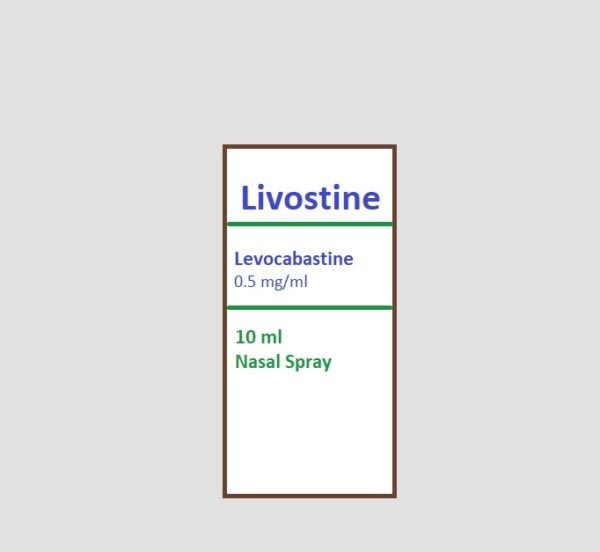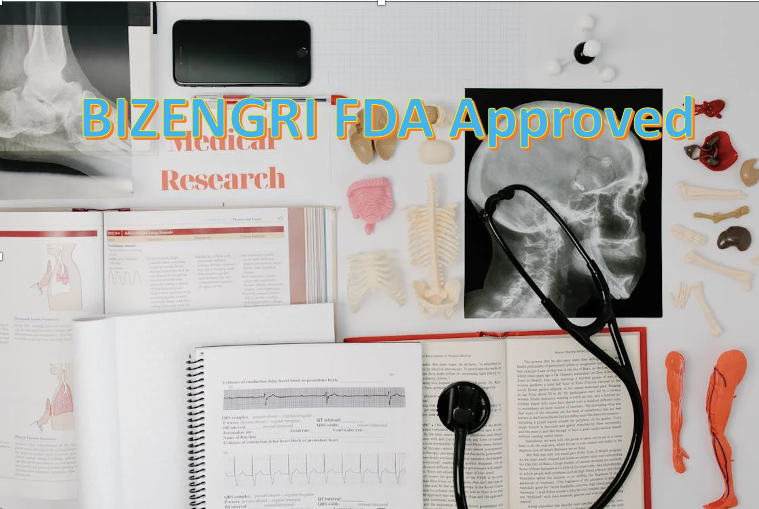Levocabastine is a medication primarily used for the treatment of allergic conjunctivitis, which is inflammation of the conjunctiva due to allergies. It belongs to a class of drugs known as antihistamines. Levocabastine works by blocking the action of histamine, a substance in the body that causes allergic symptoms such as itching, redness, and swelling. By inhibiting histamine, levocabastine helps to relieve symptoms associated with allergic conjunctivitis, such as itching and redness of the eyes.
An effective and selective antihistamine called levocabastine nasal spray (Livostin) is used to treat the symptoms of allergic rhinitis and the allergic reactions connected to the common cold, the flu, and other viral infections.
Levocabastine Uses:
- Allergic rhinitis:
- It is recommended for people 12 years of age and older for the symptomatic treatment of allergic rhinitis.
Read: Azelastine for allergic and vasomotor rhinitis
Levocabastine Dose in Adults:
Levocabastine Nasal Spray (Livostin) Dose in the treatment of Allergic rhinitis:
- For adults under 65 with allergic rhinitis (hay fever), the typical dose of levocabastine is two sprays in each nostril, twice a day.
- If needed, this dose can be increased to two sprays 3 to 4 times a day.
- If there's no improvement after using it for three days, it might be best to stop the treatment.
- It's important to note that using levocabastine continuously for more than 10 weeks hasn't been studied, so it's not recommended to use it for that long.
Use in Children:
Refer to adults dosing
Pregnancy Category: C
- In animal studies, some negative effects were seen in the offspring when the mothers were given very high oral doses of levocabastine, much higher than what humans would take through the nose.
Use during breastfeeding:
- After using levocabastine through the nose, tiny amounts of the medication have been found in human breast milk according to a study from 1999.
- Because of this, the manufacturer suggests being careful when giving levocabastine to women who are breastfeeding.
Dose in Kidney Disease:
- The manufacturer's instructions don't include specific changes to the dosage for people with kidney problems.
- However, it's advised to be cautious when using levocabastine in such cases.
Dose in Liver disease:
- The manufacturer's instructions do not contain any specific adjustments to the dosage for individuals with liver problems.
- However, it's important to use levocabastine carefully in such cases.
The majority of a drug's adverse effects are temporary, and their frequency isn't always known.
Less Common Side Effects of Levocabastine Nasal Spray (Livostin):
- Local:
- Application site irritation
- Application site pain
- Application site burning
- Application site reaction (dryness, discomfort)
- Central nervous system:
- Fatigue
- Ophthalmic:
- Eye irritation
- Respiratory:
- Epistaxis
- Pharyngolaryngeal pain, sinusitis
Contraindications to Levocabastine Nasal Spray (Livostin):
If someone has a hypersensitivity, meaning a severe allergic reaction, to levocabastine or any ingredient in the medication, they should not use it.
Warnings and precautions
Renal impairment
- In cases of renal impairment, it's important to be cautious when using levocabastine as there is limited data available regarding its use in individuals with kidney problems.
Monitoring Parameters:
None mentioned. Monitor the response to treatment.
How to administer Levocabastine Nasal Spray (Livostin)?
How to Use Levocabastine Nasal Spray
- Shake Well: Before using the nasal spray, make sure to shake the bottle properly.
- Priming: Before the first use, the bottle needs to be primed. This means you'll need to spray it until a fine mist comes out.
- Prepare: Before spraying, advise patients to blow their nose and clear their nasal passages.
- Spray and Inhale: Instruct patients to inhale through their nose while spraying the medication. This helps the medicine reach the nasal passages effectively.
Mechanism of action of Levocabastine (Livostin):
Levocabastine is a powerful and selective blocker of the histamine H1 receptor.
Onset of Action:
- Begins working in about 10 minutes after administration.
Absorption:
- Not fully absorbed into the body.
Distribution:
- It spreads throughout the body with a volume of distribution of about 1.13 liters per kilogram.
Protein Binding:
- About 55% of the medication binds to proteins in the blood.
Metabolism:
- Levocabastine undergoes minimal metabolism in the liver.
Bioavailability:
- Between 60% to 80% of the drug is available for use by the body.
Half-life Elimination:
- It has a long half-life of elimination, lasting between 35 to 40 hours.
Time to Peak:
- The maximum concentration in the body is reached approximately 3 hours after administration.
Excretion:
- Levocabastine is primarily eliminated from the body through urine (65% to 70% as unchanged drug) and to a lesser extent through feces (10% to 20% as unchanged drug). (Source: Simons, 1999)
International Brand Names of Levocabastine:
- Livostin
- Bilina
- Livocab
Levocabastine Brand Names in Pakistan:
No Brands Available in Pakistan

 Injection for familial chylomicronemia syndrome.jpeg)


